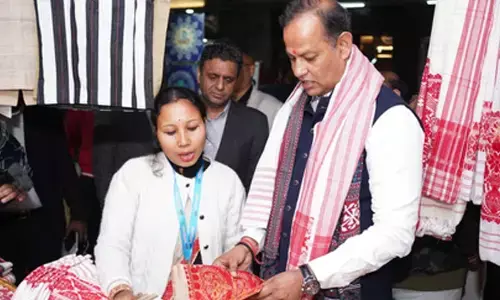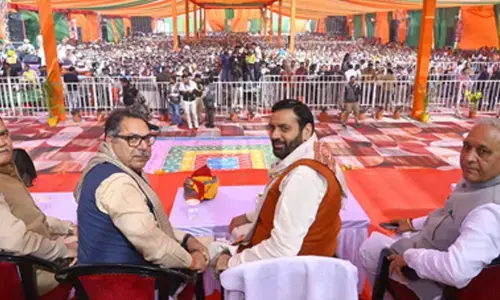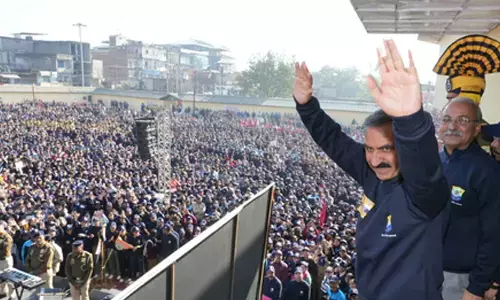Suspicion against Sikhs

Suspicion against Sikhs, The Sikhs are a small, sturdy community in India. Since it is limited in size, it is very protective about its identity. It often overreacts but that is the sign of its assertion that it does not want to be taken cursorily.
 The Sikhs are a small, sturdy community in India. Since it is limited in size, it is very protective about its identity. It often overreacts but that is the sign of its assertion that it does not want to be taken cursorily.
The Sikhs are a small, sturdy community in India. Since it is limited in size, it is very protective about its identity. It often overreacts but that is the sign of its assertion that it does not want to be taken cursorily.
Punjab, the community’s home state, has witnessed many morchas (movements) of the Sikhs. But if one were to probe every movement of theirs, one would find infer that its search for identity had propelled the community to defy the authorities.
Punjab Chief Minister Parkash Singh Badal has said that he will take up Sikh “black list” with Prime Minister Narendra Modi to conclude the cases against them and to get the release of Sikh “convicts” who had served the sentence awarded to them.
No one will take exception to that. But one would think that the point which was settled in 1990 was being unnecessarily raised. I mean the demonstrations by the Sikhs abroad against the Operation Blue Star which led to the entry of Indian armed forces in the Golden Temple – the Sikhs’ Vatican. Some other methods should have been adopted to flush out the militants from the Akal Takht, the Sikhs’ highest authority. Sending forces inside the temple was a wrong step. And even though the government has apologised for it, but that does not condone the mistake. Some heads should have rolled at the political as well as the administrative level.

But since the top Congress leaders were involved in ordering the armed forces to go inside the temple, none was punished. Even the official reports on the subject are biased and one sided.
Badal has raised the question of “Sikh list” to tell the community that when it comes to the question of justice to the Sikhs, only a Sikh can help them. This is unfair and the purpose is to garner the Sikh vote. Badal heading the Akali Dal is understandably placating the Sikh community. But in the process, he is polarising the society, neither in the interest of Sikhs nor that of Punjabis.
I do not think that there is any Sikh list now. This was true till 1990 when as India’s High Commissioner I scrapped the list with the help of officials from the Home Ministry and the Intelligence Bureau whom I invited to London. The officers spent one week in London and practically scrapped the list.
I recall scrapping the list of one hundred-odd Sikhs who were on the list, merely because they had raised the slogan of Khalistan in the front of India’s High Commission at London.
The front gate was closed in June 1984 following operation Blue Star, when the Army entered the Golden temple at Amritsar. A British policeman stood guard outside while an Indian Security man responded from within to whoever rang the bell, by opening a little window in the gate and sizing up the caller. The turbaned ones were often asked to come by the back door and not necessarily treated well.
I do now know how digging the past serves any purpose except that the matter gets more tangled and more communalised. There is enough of bad blood between the two communities.
The effort should be how to oust the poison that has got injected into the blood of the two communities. It is a pity that very little effort is being made these days in this field. In the late eighties, there was a Punjab group, headed by Inder Kumar Gujral before he joined the government, to make concerted efforts to bring the two communities closer. In fact when Gujral offered me the assignment at London, he said that he was keen to fill the cleavage that had developed between Hindus and Sikhs following the 1984 anti-Sikh riots.
I had never been part of official diplomacy because I was an active journalist. But when he said that I could do something to bring the two communities together I thought that I should try to do whatever I could do in this direction.
Therefore when I occupied the position of High Commissioner, my job was to explain that New Delhi was prepared to transfer all subjects to the state except the three. And the impression about New Delhi against the Sikh community was not correct. It did not trust me because there was no love lost between the High Commission and the Sikh community.
When I became the High Commissioner, I found to my horror that the Sikhs were not allowed to enter the building premises through the main door. The security man would see through the aperture at the main door whether the entrance was a Sikh or not. If he was, he was asked to come through the back door. The explanation given by the Commission’s official was that they did not want the terrorists to enter the building.
When I asked that it was not written on anybody’s face whether he was a terrorist or not, the reply was that the Sikhs could not be trusted because many among them were militants and supporters of the Khalistan demand.
I ordered that the opening of the gates straightaway. Pat was the protest by the Committee of Secretaries to the Government of India that I would be personally responsible if anything happened to the staff. Nothing happened after the opening of the gate. It was a bogey which the biased officials had created against the Sikh community in the UK.
The problem is not as simple as Badal Sikh list. Both communities have to find the reason for suspicion and bias. Its removal will serve the purpose, not any particular list.
















